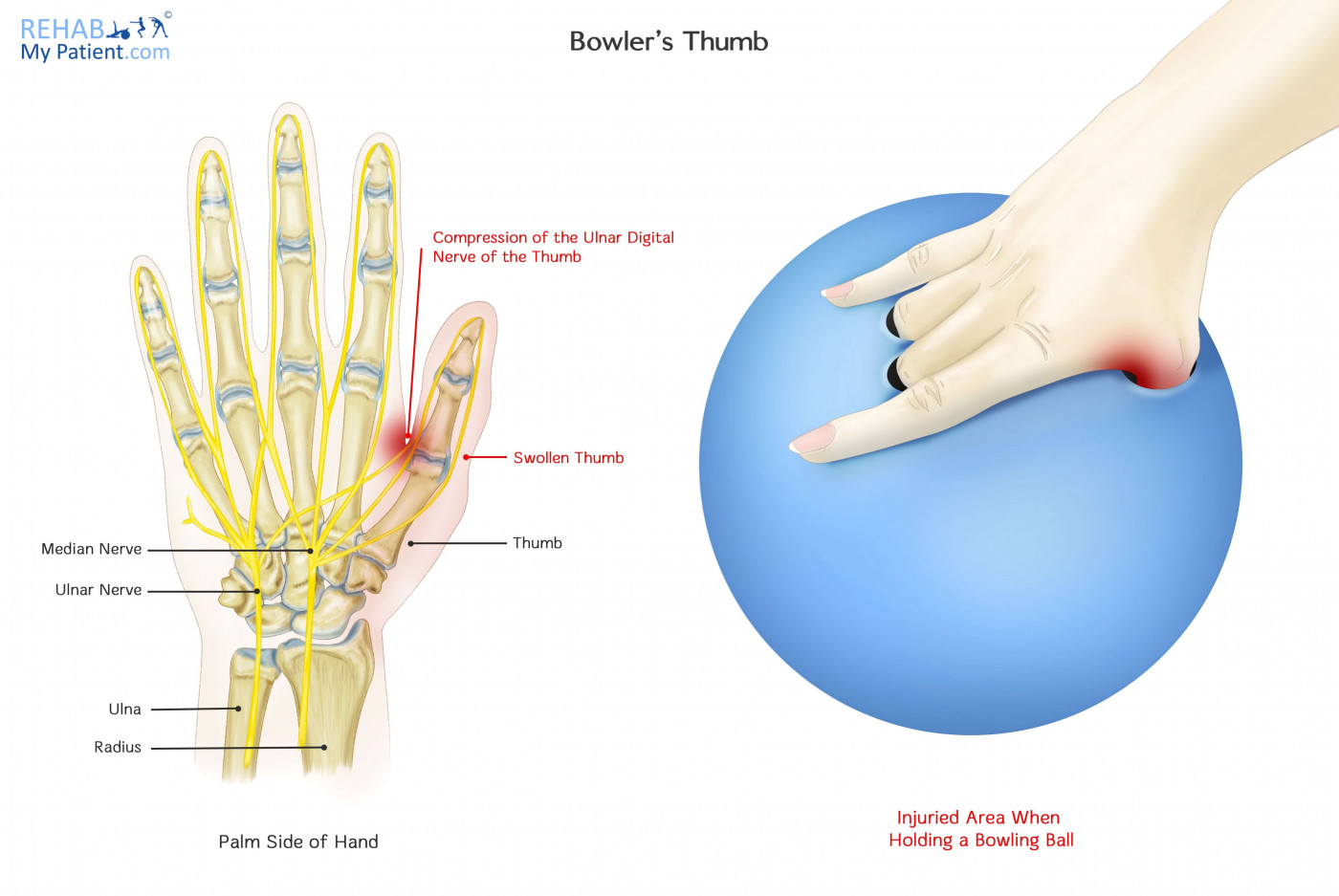
Bowler’s thumb happens when there is compression and possible damage to the nerves within the thumb. Damage often occurs because the sizing of the thumb hole in the bowling ball isn’t the right size. Repeated compression or friction causes extensive damage to the nerves responsible for providing sensation to the thumb. One of the most common symptoms of the condition is thumb numbness.
Apart from numbness at the end of the thumb, there might also be pain on the inner part of the thumb and the web that goes between the index finger and the thumb. Athletes will often experience weakness when pinching things and participating in activities that involve the thumb. In certain cases, a tender nodule might also be felt in the thumb.
The name is derived from the frequency in the sport of ten-pin bowling. The ulnar or radial digital nerve becomes compressed on the inside part of the thumb from thumb holes that are too tight. It tends to be more common in those who are trying to put a great deal of spin on the ball. In long-term situations, the repeated friction can cause adhesions around the nerve which can cause problems when not bowling.
Bowler’s Thumb Anatomy
The thumb is the first of the digits in the hand, but it isn’t commonly referred to as a finger. The thumb has a unique range of movement that isn’t shared by the other digits in the hand. Beyond being able to bend its knuckle, the top of the thumb is capable of touching the tips of all the other fingers. Thanks to the increased range of motion, it assists in the individual’s ability to hold and grasp items.
The nerves that tend to be compressed are the ulnar digital nerve, or the radial digital nerve.

How to Treat Bowler’s Thumb:
- Stop the activity that is causing the problem! Instead of continuing with your bowling, you need to take a break and allow the thumb the time it needs to heal properly. If you cannot stop bowling altogether, then check your ball weight, hole size and technique with your coach.
- Splint or Brace: using a splint or brace can help to keep the thumb in place and prevent further injury from occurring.
- Ice
Apply ice to the affected thumb for 5-10 minutes at a time three to five times per day to help reduce swelling and inflammation.
- Physical Therapy
Physical therapy is important in helping to improve the function in the hand and reduce pain. Regardless of whether or not you are going to have to go through surgery, physical therapy can help address your condition.
Tips:
- Try altering the grip or round the edge of the bowling ball’s thumb hole.
- Try using a splint to help protect the thumb when playing the game.
- Use a ball that has a bigger hole to avoid further injuries.
- If conservative measures don’t work, you might have to undergo surgery to adjust the nerve’s course to help avoid compression.
Sign Up
Sign up for your free trial now!
Get started with Rehab My Patient today and revolutionize your exercise prescription process for effective rehabilitation.
Start Your 14-Day Free Trial